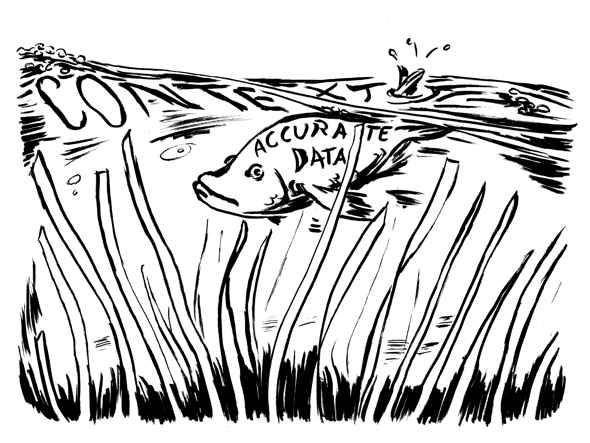Physical Environment
Tip: Prior to collecting data from participants, review the physical space to make sure that the dècor does not reflect stereotypes and is both comfortable and inviting to the target groups. This includes being accessible to people with disabilities.
Rationale: People's comfort/discomfort in an environment has been found to affect their responses to questions about interest in STEM fields and careers and their feelings of belonging.1 For example, women in a stereotypical male “nerd” environment showed less interest in computer science careers than did women in other environments. Women who had just seen sex-stereotyped commercials lowered their interest in math and math-related majors and did worse on a math test than did other women.2 When Black women and men were shown a company newsletter that depicted the company as having a moderate amount of minorities, they were more apt to trust the company and felt that they belonged in that company at the same level that White respondents felt like they belonged.3 There may be a similar effect on White men but research has not been done in this area with them.
Tip: When testing participants in group settings, try to have a balanced number of enough women and men. For gender, Kanter4 reported that having ratios between 60/40 and 50/50 makes a group balanced. If the demographic breakdown of participants does not allow for balanced groups, consider collecting the data in all male or all female groups or in one-on-one settings.
Rationale: When taking a math test in groups of three, women scored the highest when all three members of the group were women, in the middle when two of the three were women, and lowest when they were the only woman in the group. Men's scores were comparable across the settings.5 Women who viewed a STEM video, with three times more men than women, had a stronger physiological response and responded differently to the setting than did women who viewed a video with equal numbers of women and men in it.6
1 Davies, P. G., Spencer, S. J., & Steele, C. M. (2005). Clearing the air: Identity safety moderates the effects of stereotype threat on women's leadership aspirations. Journal of Personality and Social Psychology, 88(2), 276-287. doi:10.1037/0022-3514.88.2.276
Purdie-Vaughns, V., Steele, C. M., Davis, P. G., Ditlmann, R., & Crosby, J. R. (2008). Social identity contingencies: How diversity cues signal threat or safety for African Americans in mainstream institutions. Journal of Personality and Social Psychology, 94(4), 615-630. doi:10.1037/0022-3514.94.4.615
2 Cheryan, S., Plaut, V. C., Davies, P. G., & Steele, C. M. (2009). Ambient belonging: how stereotypical cues impact gender participation in computer science. Journal of Personality and Social Psychology, 97(6), 1045-1060. doi:10.1037/a0016239
Cheryan, S., Meltzoff, A. N., & Kim, S. (2011). Classrooms matter: The design of virtual classrooms influences gender disparities in computer science classes. Computers & Education, 57(2), 1825-1835. doi:10.1016/j.compedu.2011.02.004.
Davies, P. G., Spencer, S. J., & Steele, C. M. (2005). Clearing the air: Identity safety moderates the effects of stereotype threat on women's leadership aspirations. Journal of Personality and Social Psychology, 88(2), 276-287. doi:10.1037/0022-3514.88.2.276
3 Purdie-Vaughns, V., Steele, C. M., Davis, P. G., Ditlmann, R., & Crosby, J. R. (2008). Social identity contingencies: How diversity cues signal threat or safety for African Americans in mainstream institutions. Journal of Personality and Social Psychology, 94(4), 615-630. doi:10.1037/0022-3514.94.4.615
4 Kanter, R. M. (1977). Some effects of proportions on group life: Skewed sex ratios and responses to token women. The American Journal of Sociology, 82(5), 965-990. doi:10.1086/226425
5 Inzlicht, M., & Ben-Zeev, T. (2000). A threatening intellectual environment: Why females are susceptible to experiencing problem-solving deficits in the presence of males. Psychological Science, 11(5), 365-371. doi:10.1111/1467-9280.00272
6 Murphy, M. C., Steele, C. M., & Gross, J. J. (2007). Signaling threat: How situational cues affect women in math, science, and engineering settings. Psychological Science, 18(10), 879-885. doi:10.1111/j.1467-9280.2007.01995.x


